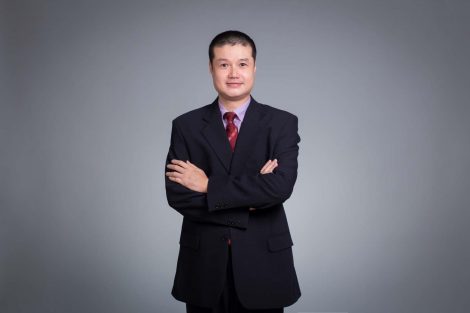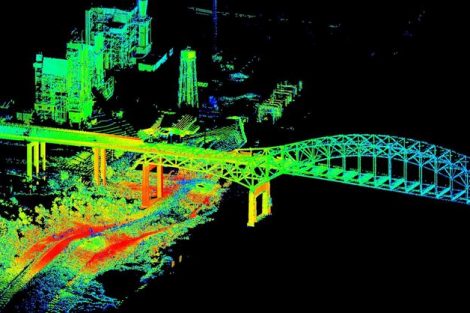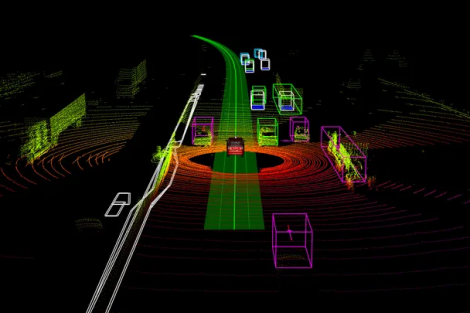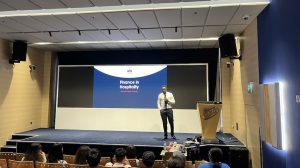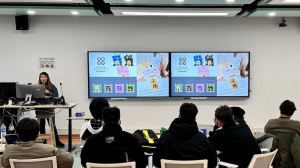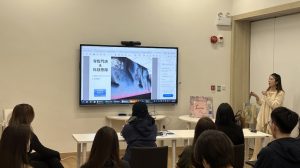Dr. Sonny Su Qinglang, Assistant Professor at IFTM, has seen his co-invention of Point Cloud securing a national patent held by the Beijing Institute of Technology, Zhuhai (BITZH).
Dr. Su holds two doctoral degrees: a Doctor of Applied Psychology from the City University of Macao (2017) and a Doctor of Philosophy from the University of Central Lancashire, United Kingdom (2004). During his pursuit of the earlier doctoral degree in the UK, Dr. Su has been awarded a full scholarship to study for a Doctor of Philosophy in Digital Image Processing with specialised in Automatic Image Alignment for Clinical Evaluation of Patient Setup Errors in Radiotherapy at the University of Lancashire, a project carried out in collaboration with the Rosemere Cancer Centre at the UK’s Royal Preston Hospital.
In the professional arena, Dr. Su has been employed by two companies in the business of technological development and support for the casino and gaming industries. One of the two companies is listed on the New York Stock Exchange, while the other is on NASDAQ.
While emphasising his satisfaction with obtaining his fourth patent, Dr. Su expressed his views that a patent is a form of recognition and reward for the originality and usefulness of an invention. Nonetheless, he remains humble because “a patent comes with certain obligations and risks”, such as specification disclosure and potential infringement.
Point Cloud is the technology of 3D mapping, which uses sets of computational spatial data points to produce a three-dimensional coordination system that helps computers visualise the surface of an object.
Dr. Su and his colleagues’ invention discloses a point cloud registration method, system, device and storage medium. It then takes two cloud points to achieve sets of points through translational coordinates. The coordinates will be combined with a rotational angle determined during the process to register a surface. The invention has achieved shorter computational times and higher accuracy than existing similar techniques.
The new invention will be beneficial to Macao in the conservation of heritage sites and architecture. According to Abdel-Monem Sayed Mohamed at the National Research Institute of Astronomy and Geophysics, Helwan, “3D laser scanner technology is used in the development of the tourism industry in some tourist places in Egypt, where this technology plays major roles in various fields that contribute to the industry of tourism, archaeology and preservation of ancient heritage.”
In addition, Su Yang, Hou Miaole, and Li Songnian highlighted that “3D point cloud segmentation (3DPCS) algorithms are mainly used to extract the basic geometry elements from point cloud data and can be used for surface damage detection and deformation analysis.”
Each year, IFTM welcomes a multitude of new students who show interest in cultural heritage conservation and promotion, which, with the help of technology, have become much more practical.
For students who desire to incorporate technology into tourism activities, Dr. Su suggests they stay updated on the latest trends and developments in technology and how they can be used to enhance tourism and cultural and heritage conservation.
He added that it is also important to gain practical skills and experience in using technology in tourism and cultural and heritage conservation. Building a social network and collaborating with other students, researchers, professionals, or organisations who share your interest in technology, tourism, and cultural and heritage conservation is also a pro.
Moreover, Dr. Su suggests they develop a multidisciplinary and cross-cultural perspective on tourism and cultural and heritage conservation. “Learn about the history, culture, values, needs, and expectations of different tourist destinations and communities,” said Dr. Su. “Understand the ethical, social, environmental, and economic implications of using technology in tourism and cultural and heritage conservation, [and] respect and protect the diversity and authenticity of cultural and natural heritage.”
Currently, the Macao SAR Government has employed technological apparatuses to maintain the city’s tangible cultural heritage.



